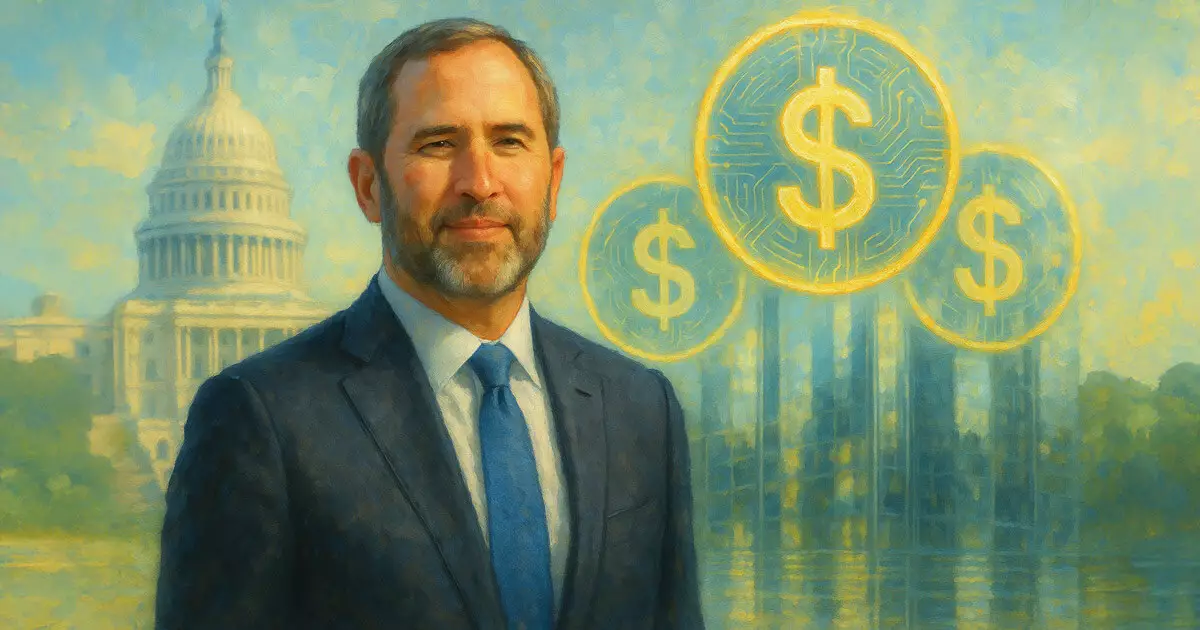Ripple’s CEO Brad Garlinghouse has spotlighted a pressing issue facing the United States: the urgent need for a regulatory framework for stablecoins. These digital currencies, which are pegged to fiat currencies like the U.S. dollar, are not merely a trend but are rapidly becoming fundamental to financial innovation worldwide. As Garlinghouse rightly points out, the rapid adoption of stablecoins globally poses a significant threat to U.S. financial competitiveness unless lawmakers act decisively. This is not just a call to maintain status quo; it’s a rallying cry for the U.S. to reclaim its leadership in the global financial arena.
The Consequences of Inaction
The recent Senate vote against the GENIUS Act—an initiative designed to create a unified federal approach to stablecoin regulation—reveals a troubling lack of urgency among U.S. lawmakers. The narrow 49-48 outcome signifies a dangerous trend that could leave the U.S. lagging behind in a rapidly evolving market. By not establishing clear guidelines, we risk relegating stablecoins to a mishmash of state regulations that stifle innovation. In an era marked by rapid technological progress, such delays can cost America its competitive edge. The hesitation to act is not merely bureaucratic; it’s a potential mortification for our national economy.
Missed Opportunities
Scott Bessent, the U.S. Treasury Secretary, criticized the Senate decision as a “missed opportunity” to bolster U.S. financial strength and influence in global markets. He contends that without a robust federal framework, the U.S. could lose the dominance that the dollar has historically enjoyed, especially when other nations explore their own digital currencies. The GENIUS Act was pitched as a transformative measure—one that could enhance American influence while ensuring stablecoin development aligns with national interests. The loss in that vote isn’t just procedural; it’s a systemic failure to recognize the transformational potential of stablecoins.
The Rising Importance of Stablecoins
The evidence supporting stablecoins is omnipresent, as demonstrated by their explosive growth. In March 2025 alone, stablecoin transaction volumes soared to a staggering $1.82 trillion, underscoring their essential role in contemporary financial transactions. Unlike their more volatile counterparts like Bitcoin, stablecoins offer stability and reliability—qualities that resonate well in a fluctuating economic landscape. Their surge in popularity is prompting traditional financial institutions, like Stripe and Meta, to take notice and invest, indicating a shift in the broader financial ecosystem. The situation begs the question: can we afford to ignore a crucial segment of financial innovation?
As we stand on the precipice of a financial revolution, it is disheartening to witness lawmakers inaction on a matter that could reshape the economic landscape. The debate surrounding stablecoins is not merely academic; it’s practical and immediate. A proactive approach to regulation is essential for ensuring that the U.S. remains a frontrunner in finance and technology. The clock is ticking, and any further delay only serves to undermine our national interests in a rapidly digitizing world. The imperative for clarity and cohesion in stablecoin regulation is not a distant goal—it’s an urgent necessity that lawmakers must prioritize.














